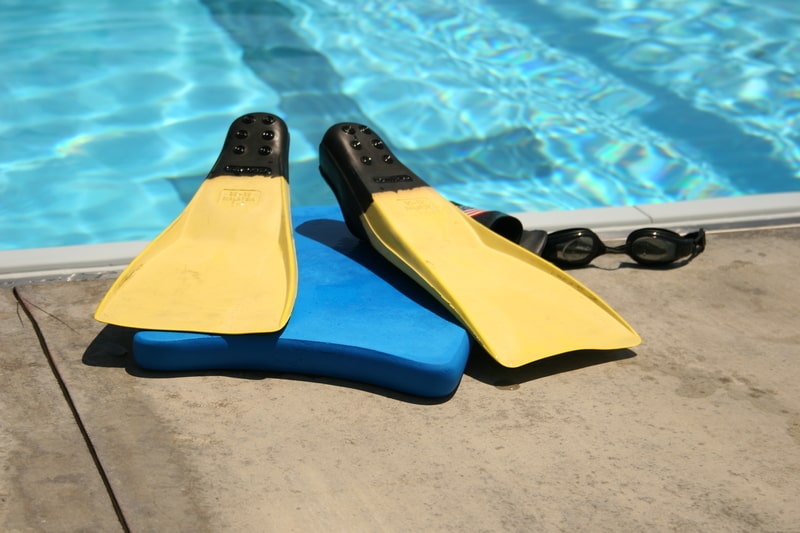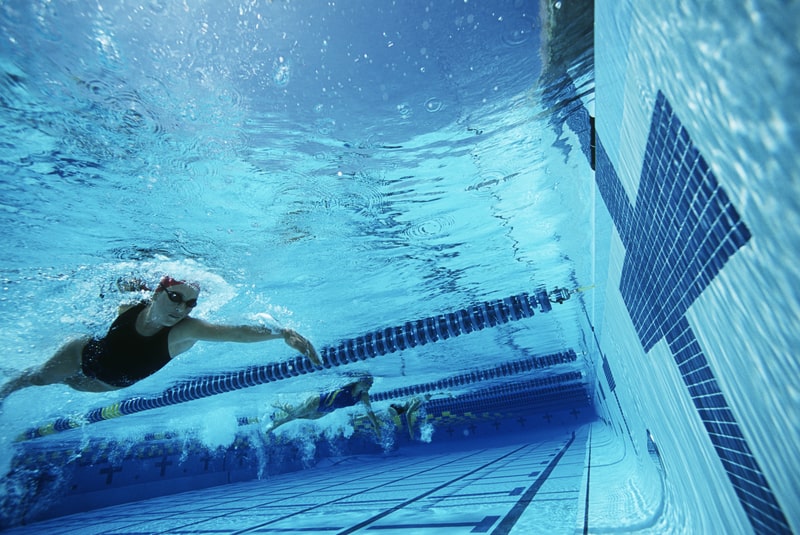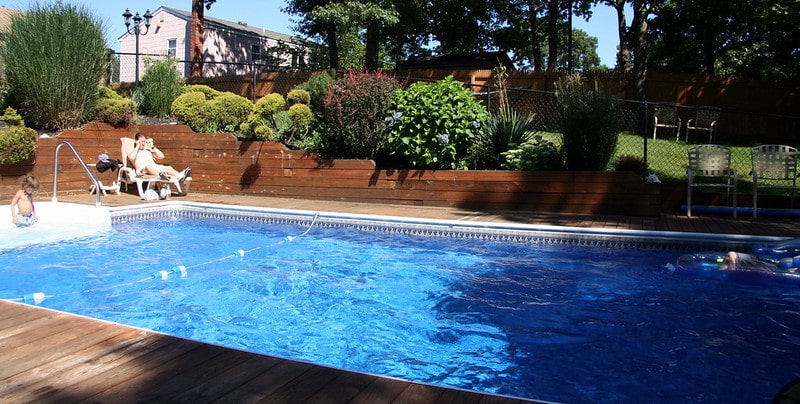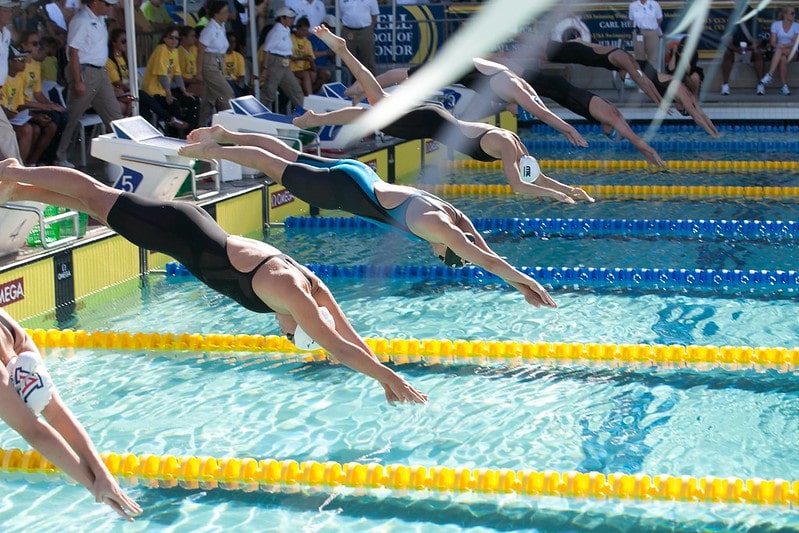Last updated on June 20th, 2023
Swimming as an exercise is popular as an all around body developer. Swimming is also taught for life saving purposes and it is also used for therapy for physically handicapped people. Here we discuss some interesting facts about swimming and world famous swimmers.
1. Swimming is the term given to the activity where people use their entire body to move through bodies of water. In other words, swimming is manoeuvring the human body through water.
2. Swimming is both a competitive and a recreational activity.
3. Competitive swimmers swim on average 6 to 12 miles a day in preparation for their upcoming events.
4. Different styles of swimming (or ways of maneuvering the human body) are referred to as a stroke. Currently, there are four types of strokes or official swimming styles.
5. As a matter of technique, competitive swimmers propel their bodies against both water and air.
6. Swimming is relatively unpopular. More people are unable to swim even a little than those who are able to. Even smaller is the number of people who swim well. Currently, studies indicate that only approximately 40% of Americans can swim even a little and approximately 4 billion worldwide cannot swim.
7. The average freediver can hold their breath for a total of approximately 10 minutes. This is far longer than the average healthy and fit human being can hold his or her breath for. Yet, this average falls far short of the Guinness World Record time of 22 minutes.

8. The odds of making it to the Olympics are very slim. Approximately 2000 swimmers try out for the Olympics at any given time. However, only about 50 of that amount will actually make it.
9. Keeping in line with Olympic facts about swimming, the 2012 Olympic games saw swimmers from 166 countries competing in the Olympics in London that year.
10. Swimmers sweat too! Due to the nature of swimming (i.e. being in the water), we forget that there is still much energy being exerted during this physical activity. As a result of all the energy exerted, swimmers sweat while swimming although being immersed in water will often mask this.
11. The world’s youngest competitive swimmer to date is only 10 years old. The young girl, Alzain Tareq hails from the beautiful nation of Bahrain and she competed in the 2015 World Championship event against adult and late teenage swimmers who were twice her age.

12. While the world’s youngest competitive swimmer is 10, the world’s oldest swimmer (also a woman) is 90 years Tareq’s senior at 100 years old. Yes, you read that correctly. The world’s oldest swimmer is Japan’s 100-year-old Mieko Nagaoka, and she also emerged to set her record in 2015; becoming the first centenarian and the oldest woman to complete the 1500-meter freestyle swim. Interestingly, she first started swimming at 80 years old to recover from a knee injury.
13. Speaking of freestyle, they are four official swimming strokes. These strokes comprise of freestyle, butterfly, breaststroke, and backstroke, and are used to form the basis of competitive swimming as races are shaped around one or a combination of these strokes. The breaststroke is the oldest known stroke of these main four.
14. Breaststroke, one of the world’s most popular swimming styles, was first introduced in 1696 by author Thevenot in his book “The Art of Swimming.”
15. The breaststroke is the oldest known stroke of the four official swimming strokes, while the freestyle is the fastest stroke of the four.

16. Swimming was a men-only sport up until 1912 when women were allowed to compete. In that year, Fanny Durack, an Australian swimmer, became the first woman to win a gold medal in the 100-yard freestyle race. After women began participating in the sport, they began making record-breaking waves.
17. Jenny Thompson of the USA is the world’s most decorated female swimmer. She has won 12 Olympic medals – 8 gold, 3 silver, and 1 bronze – during her 14 year professional swimming career.
18. American Diana Nayad made history when she was 64-years old as she swam a grueling 103 miles from Cuba to Florida in 2013. This was not her first attempt at the swim that took 53 hours of swimming.
19. Shaving is a swimmer’s secret weapon in the search for a competitive edge. Many swimmers shave legs and heads to increase their performance in the water. Hair removal is a popular way to not only look better in a swimsuit but to also reduce drag. According to studies, shaved skin is more sensitive to the feel of the water and its pressure, allowing swimmers to make adjustments where possible and improve their technique where necessary.
20. Swimming is the perfect exercise. Swimming works just about every major muscle in the body ‘at the same time,’ unlike many popular sports like football and baseball which focus on engaging specific muscle groups to participate or play. Yes, that’s right. Swimming uses more muscles than some of your favorite sports, completely trashing the notion that swimming is a ‘real sport.’

21. Swimming as an exercise activity improves your cardiovascular health while burning fat and building muscle. This is due to the all-engaging nature of swimming as far as the body is concerned.
22. Some of the first known records of persons swimming dates back to about 10,000 years ago; that is, from approximately 2500 BC in Egyptian drawings. The earliest records could be found in stone age paintings in the Cave of Swimmers possibly date back even further than 2500 BC.
23. Speaking of early records, the oldest concrete swimming pool was built in 1915 in Texas. In 1956, the US National Swimming Pool Institute was founded to help set safety standards for pools — a role the organization still fills today. President Gerald Ford, in 1975, added an outdoor swimming pool to the White House.
24. The Lexis Hibiscus Port Dickson, a resort in Malaysia, currently holds the Guiness World Record for having the most swimming pools. The resort boasts an amazing 643 different pools to choose from.
25. Swimming for fitness has been shown to burn up to 40% more calories per hour than aerobic activities such as cycling, and 30% more per hour than running. This is largely attributed to all the muscle groups and organs (yes, the lungs and heart get a massive boost) being engaged all at once.

26. Benjamin Franklin invented swimming flippers and fins (in 1717 when he was just 11 years old) as swimming aids to help boost swimming performance for new and intermediary swimmers. Professional swimmers, on the other hand, are able to emulate the effect of these aids by flexing their toes all the way down.
27. The average Olympic swimming pool holds up to 660,000 U.S. gallons of water. The swimming pool considered here is 50 m long, 25 m wide and 2 meters deep.
28. Gertrude Ederle born in Manhattan, New York, United States, became the first woman in 1926 to swim across the English Channel.
29. Swimming is a great way to improve asthma induced by vigorous exercise. This is as swimming strengthens the heart and lungs.
30. In addition to reducing exercise-induced asthma, swimming regularly can also help reduced inflammation, as well as lowering stress and depression.

31. Dana Vollmer of New York, United States, was just 12 when she signed up for the U.S. Olympic Trials in 2000. Although she failed to qualify, she did compete in he 2001 Goodwill Games. Her mother always had a portable defibrillator on hand during Vollmer’s races because of her heart condition. A determined Vollmer proved this was unnecessary, though. She has won 5 Olympic gold medals and 32 international events medals. Vollmer has also held 6 world records. After a semi-retirement, she rejoined the fray in the 2016 Olympics winning a gold in 4x100m medley, a silver in the 4x100m freestyle relay, and a bronze in the 100m butterfly.
32. Swimming can help improve mood disorders and mental health. This is due largely to the fact that swimming can both reduce or lower stress and consequently help fight conditions like depression.
33. Swimming helps improve blood flow to the brain and is considered therapeutic, meditative, and great for increasing focus and other brain functions that can help improve memory — even in people living with dementia.
34. The two World Wars are markers for evolution in swimming. For example, after World War I, competitive swimming grew significantly and ‘long=john’ style swimsuits went out of style.

35. Having swimming pools at home became a thing after World War II thanks to Hollywood movies and synchronized swimming. Synchronized swimming star Esther Williams started appearing in movies that made the notion of having a swimming pool at home a more desirable consideration for many. Today, it is a staple in many upscale homes.
36. The first indoor swimming pool, known as St. George’s Bath, was opened to the public in 1828.
37. Swimming is great for rehabilitation and physical therapy. There are many circumstances that can result in someone not being able to participate in traditional workouts. As a low-impact option, swimming and other water-based exercises (like water jogging) have been proven effective for persons recovering from injuries, women who are pregnant, and other individuals who may have physical limitations.
38. Competitive swimming is a pain in the neck — literally. Many competitive swimmers experience shoulder pain as a result of participating in the sport.
39. Having incredibly flexible ankles is a hidden talent that we see in competitive swimmers. That is, many swimmers (particularly, competitive swimmers) can lay on their backs and point their toes to the point where they can touch the ground with toes while remaining in that position.
40. While we may be used to wearing and seeing ‘barely there’ swimsuit fashions in today’s day and age, the ‘skin is in’ reality we now live in did not become a thing until 1935 and 1946 respectively. In 1935, the first set of topless swimsuits for males were worn in America, while the first bikini was invented in 1946, in Paris.

41. Swimming is often viewed as a sport associated with nobility or some amount of privilege. For example, for Japanese Samurais, swimming was considered to be a noble skill.
42. Swimming debuted as a sporting option at the 1896 Olympic Games. At that time, and for a little over a decade thereafter, swimming was a men-only sport and there were only 4 events, all freestyle: 100 m, 500 m, 1,200 m, and Sailor’s 100 m freestyle.
43. We are accustomed to cruise ships in today’s world having swimming pools built into them. This feature came into being after the launch of The Adria`tic which was the first ship to have this feature in 1906. This is ship was launched alongside the Titanic.
44. The earth, like your high school swimming coach, thinks we should all swim more; approximately 71% of the earth’s surface is covered in water.
45. High school swimmers will swim approximately 1 million strokes per swimming season.

46. The first prototype of goggles was made using tortoise shells. Yes, tortoise shells. The jury is still out on how effective these were.
47. In August 2006, Croatian swimmer Veljko Rogošić became the swimmer to swim the longest distance across open seas (without wearing flippers) in history. In his historic swim which was 50 hours and 10 minutes, Rogošić traveled across the Adriatic Sea from Grado to Riccione.

48. Speaking of historic swims, American swimmer Michael Phelps has won the most medals in the history of the Olympics and has set the most world records of all time. Phelps has won a total of 23 gold, 3 silver, and 2 bronze Olympic medals, and has set 39 world records. He retired after the 2016 Olympic Games after stellar performances.
49. Sweden’s Sarah Sjöström and Hungary’s Katinka Hosszú tie for the most records in women’s competitive swimming. Currently, Sjöström holds the record for the 50-meter, 100-meter, 200-meter freestyle, as well as the 50-meter and 100-meter butterfly. Hosszú’s record-setting swims, place her as the first woman in a single event to win four consecutive world titles.

50. The average Olympic-sized swimming pool is approximately 6.56 feet deep, 82 feet wide, and 164 feet long.
51. The total volume of water in the typical Olympic-sized swimming pool is enough for approximately 9,400 baths.
. . . continue reading on the next page
